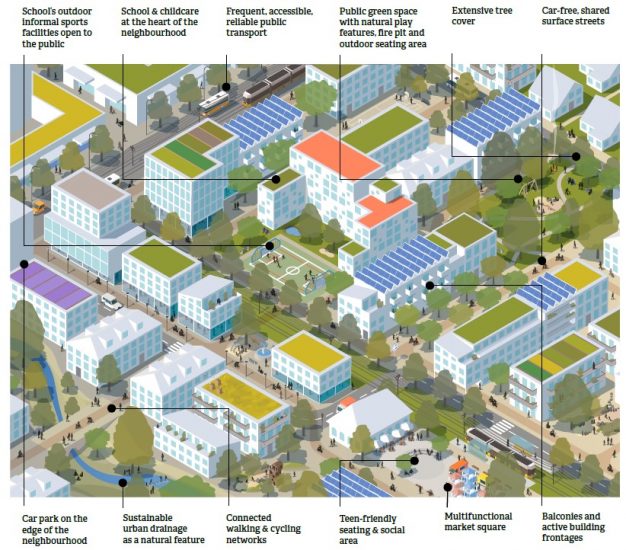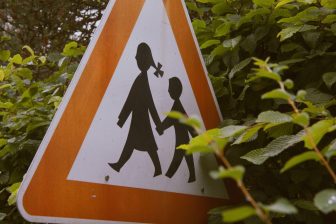
Measuring parental perception of child friendliness of a neighbourhood
Parental perception of child friendliness is an important prerequisite for designing
neighborhoods that promote children’s health and wellbeing.
Parents decide in what type of neighborhood they want to live with their children. This in turn also
affects their children’s physical activities. Whether parents perceive the neighborhood environment as
child-friendly can influence their decision to live there and to what extent (and from which age) they will
allow their children to play outside or travel independently.
These decisions thus affect the amount of physical activity the children will have, which affects the children’s health and well-being, say researchers Xiaoli Gong, Pauline van den Berg and Theo Arentze
Measuring parental perception of child friendliness can provide a new perspective of planning
suggestions for the design of child-friendly neighborhoods. The goal of this research was to develop
and empirically validate a novel measurement instrument of parental perception of child friendliness in
neighbourhoods.
We focused on parental perception of child friendliness in neighbourhoods in terms of physical and social environment. This parental perception can be taken as parents’ judgement about whether the neighborhood provides their children with opportunities that support their five rights and needs: to be safe, to move freely, have access to basic services (education, transportation, health, recreation), have access to green space and to meet friends.
This study helps to translate children’s rights into shaping suitable physical environments
Based on these rights, we designed the statements shown in Table 1 (below) to measure parental perception of child friendliness of a neighbourhood. The validity of the measurement instrument was examined using exploratory and confirmatory factor analysis. Survey data was collected from 309 parents in the Netherlands. The results indicated good reliability and validity for the measurement instrument.

This study helps to translate children’s rights into shaping suitable physical environments. In the measurement instrument, there are item statements about safety (for playing, walking and cycling in the neighbourhood), access to school, access to transportation facilities such as bus and train stops, access to care facilities, access to play & recreation facilities, and access to green spaces (trees, grass, parks and public green spaces).
Based on the factor loadings of the items, it can be concluded that, to design child friendly
neighbourhoods, there should be a strong focus on safety, to make sure children can play, walk and
cycle safely in their neighbourhood.
‘attractive public spaces that foster social cohesion’
For instance, it is imperative to furnish secure and adequately designed pedestrian walkways and bicycle lanes, distinctly separated from vehicular lanes. There is also a need to control travel speed in the neighbourhood area to protect children from car accidents. In addition, a child-friendly neighbourhood should provide basic services for children, such as a school, transportation facilities, and care and recreation facilities, such as playgrounds and sports settings.
Green spaces such trees, grass, parks and public green spaces also enhance child friendliness of
the neighbourhood. Moreover, for a child-friendly neighbourhood it is important that there are places for
children to meet and play with friends or other children.

The presence of children in the neighbourhood is of great importance for children’s social networks and
physical development. If the neighbourhood is safe enough for children to wander around and provides
recreation facilities, it will stimulate children to go outside to meet children and get to know each other.
In addition, it is also important for a child-friendly neighborhood to provide accessible community
facilities and attractive public spaces that foster social cohesion.
This is an abstract version of a study by Xiaoli Gong, Pauline van den Berg and Theo Arentze from the University of Eindhoven, which was published in the Cities journal.
Click here for the full article.




